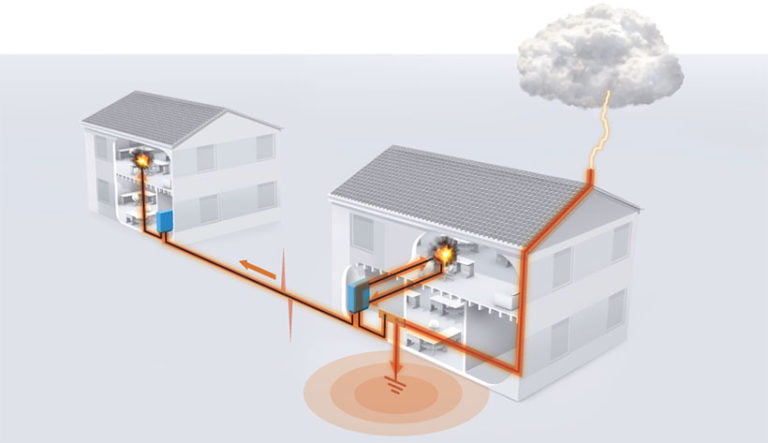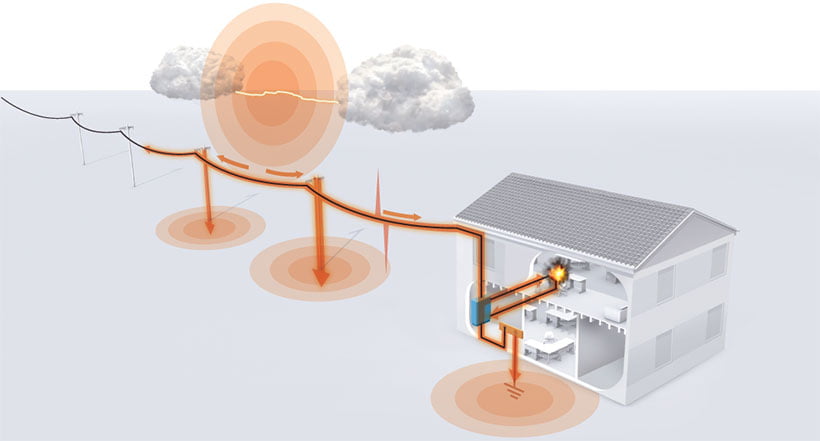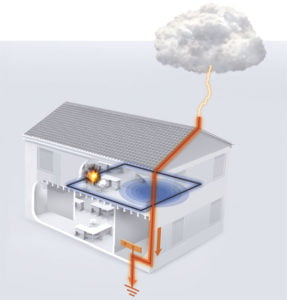Coupling Methods
Resistive Coupling
Lightning simply striking the ground injects a huge current of up to 200,000A into the ground.
This current flows away from its point of entry into the ground. It does this through the most readily available conductive medium, the ground itself (soil, rock etc). However, the earth terminations and electrical cables of electronic installations are often better conductors of current than the ground itself.
This resulting current flows through the earth, neutral and phase conductors, as well as data lines which are connected to buildings further away. It flows through the electronics and electrical systems of the buildings closest to the strike point. As it does so, devastating transient voltages appear, causing damage to sensitive electronic equipment.

Resistive Coupling – Example 1 (striking a structure)

Resistive Coupling – Example 2 (striking the ground near to a structure)
Inductive (Magnetic) Coupling
The building may have structural lightning protection, but if data and power cables inside the building are routed close to a lightning down conductor, any lightning strike to the building will cause current to flow through the down conductors, resulting in an electromagnetic field that will induce transient voltages in the buildings internal power and data cables. The same can happen in an unprotected building too, the lightning current from a direct strike now finds its path to earth through the building’s structure (reinforcing bars, steel columns etc) as well as internal pipework, cables and conduits.
Similarly, cloud to cloud lightning discharges can induce transients in overhead power, data and telephone lines. This is because lightning is a massive discharge of current. When a current flows it creates an electromagnetic field and cables passing through this field have a voltage induced on them

Inductive Coupling – Example 2 (cloud to cloud lightning)

Inductive Coupling – Example 1 (inducted electro-magnetic field)
Direct Strike
If an HV power line is struck directly by lightning, it will flashover to earth with one line flashing over before the others, creating a line to line transient that easily passes through supply transformers to reach electronic systems.

Electrical Switching
We have already established that when a current flows through a conductor it creates a magnetic field.
This field stores energy, higher currents and long lengths of conductor create more stored energy. When the current flowing along a conductor (the power supply) is switched off, the energy in the magnetic field is released in the form of a transient which can then flow through unprotected electronic equipment.
Switching events are commonplace. Inductive loads such as motors, transformers, electrical drives, large banks of lighting, industrial process equipment and so on are all sources of switching events.

